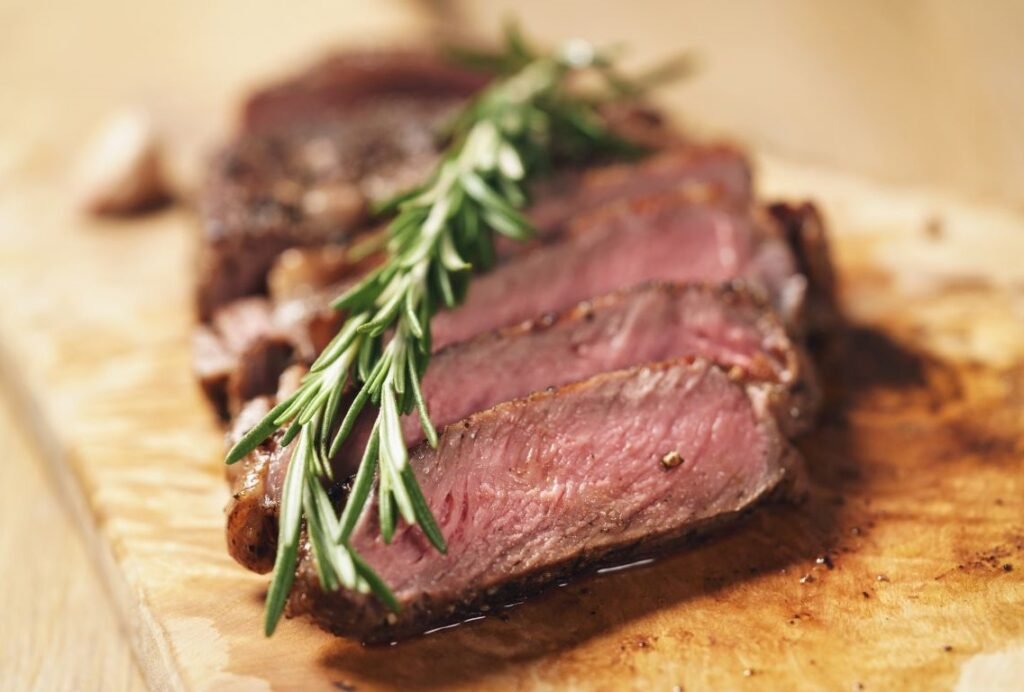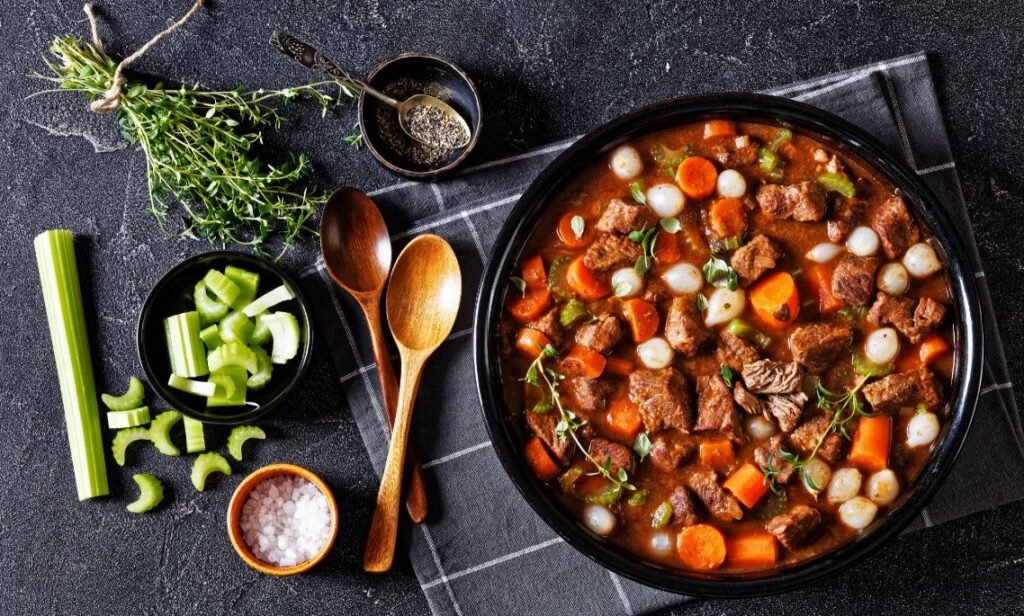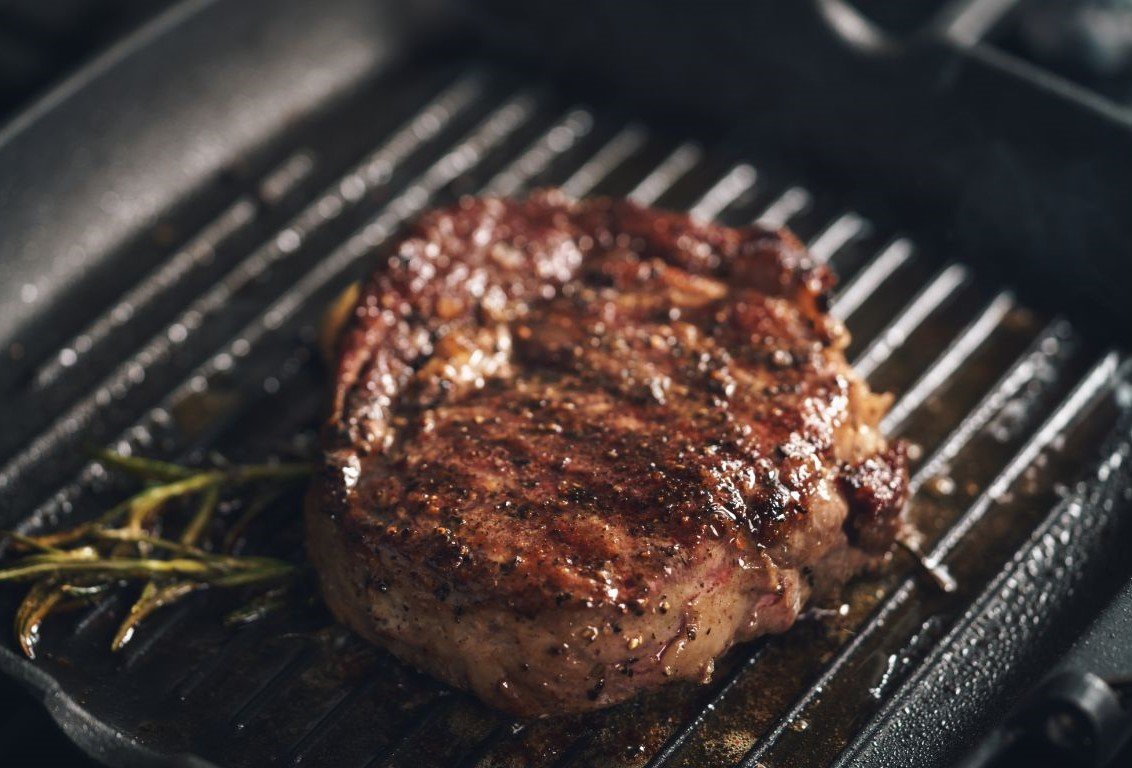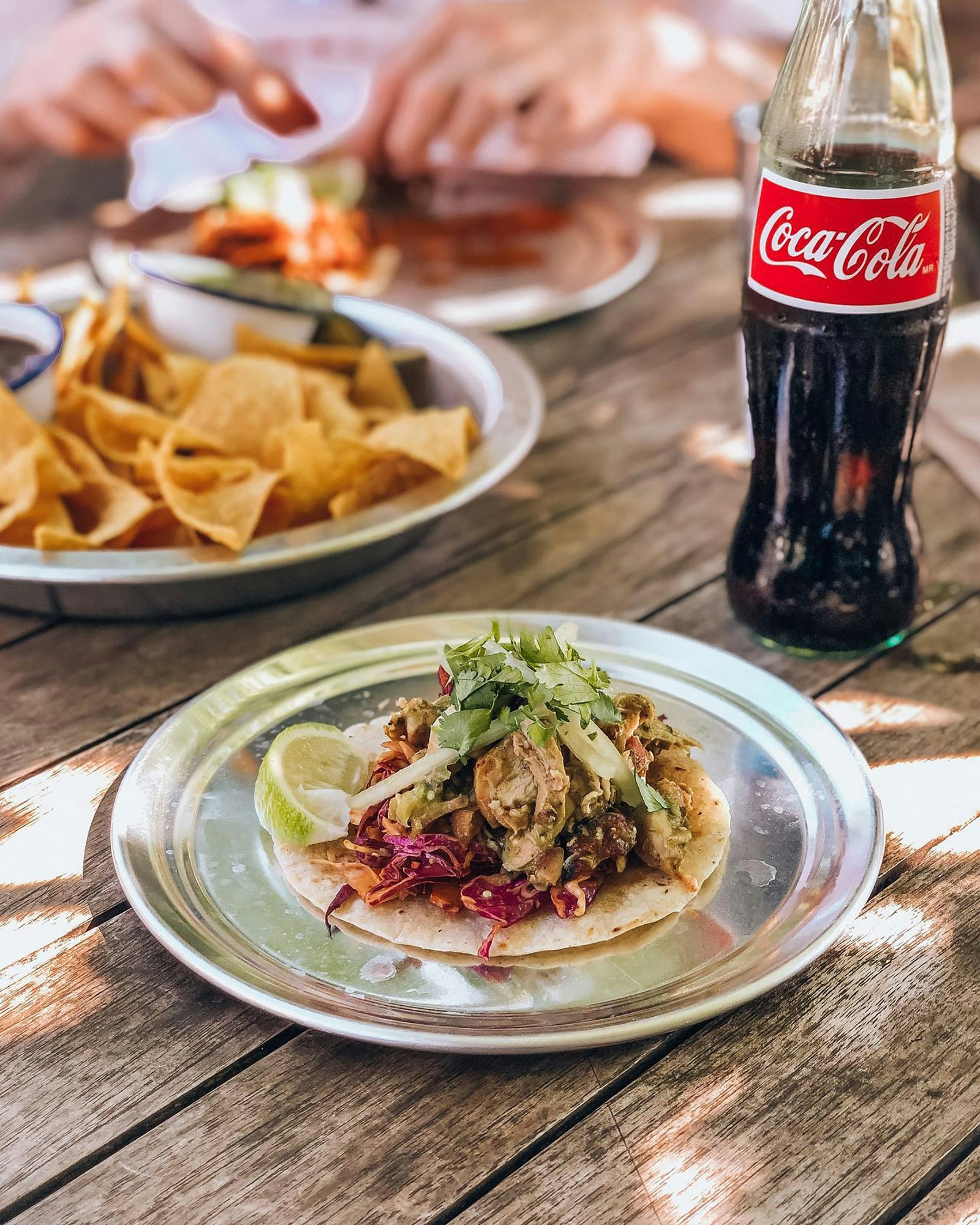Making Rib of Beef, will transform any dinner into a mouthwatering feast ideal for a romantic evening at home or a big celebration. This blog on how to cook rib of beef will address what you need to know to get a soft and tasty, precisely roasted cut. Whether you are a novice in the kitchen or a seasoned chef, learning this amazing meal mostly depends on correct cooking procedures and processes. Let’s go through the processes enabling you to design a delicious centerpiece to wow your friends and family.
1. What is Rib of beef ?
Renowned for marbling and taste, beef ribs come from the primal rib portion of the animal. Various ways to make this flexible cut provide a different flavour sensation.
Types of Beef Rib
Often savoured as a classic roast meal, this cut of beef is usually oven-cooked and presented as a centrepiece.
- Fore Rib of Beef: Rich in taste and soft, this cut—also known as the rib-eye—is primarily sought for.
- Premium cut from the rib area, prime rib beef is well-known for its marbling and extreme tenderness. Often, it’s presented as a fancy roast.
- Rib of Beef Boneless: Easily carved and presented, this cut has been stripped of its bones.
2. Roasting Rib of Beef
Among the most often used techniques for cooking beef ribs is roasting. It is ideal for a holiday feast or special dinner. Here is the correct approach:
Ingredients:
- Select a boneless or bone-in rib of beef.
- The seasons include salt, pepper, garlic, rosemary, thyme, and olive oil.
- Optional roasting accompaniments include potatoes, onions, and carrots.
Directions
- Set your oven to 450°F (230°C) first to start from. A lovely crust is developed in part by this high temperature.
- Prepare the beef’s rib by patting it dry with paper towels. This produces a crispier crust. Season with salt, pepper, minced garlic, chopped rosemary or thyme. Work the ingredients all over the meat.
- Put the beef rib on a rack in a roasting pan. Orient the rib so the bones face down if you are roasting bone-in. To build a crust, roast at 450°F (230°C) for 20 minutes; then lower the temperature to 325°F (165°C). For a medium-rare, keep roasting for roughly fifteen minutes for each pound. Check internal temperature with a meat thermometer:
- 130°F (54°C) Medium- Rare
- Medium: 140°F (60°C)
- medium-well temperature: 150°F (66°C)
- Rest: Take the roast out of the oven and let it rest for a minimum of fifteen minutes before cutting. This helps the fluids to distribute all around the meat.
- Cut the roast into slices and present with your preferred sides. Classic companions are roasted veggies and velvety mashed potatoes.
3. Fore Rib of Beef
Tender and flavorful, fore rib of beef—also known as rib-eye when cut into steaks—is appreciated. It’s usually grilling and roasting’s companion.
Cooking Styles
Usually prepared as individual steaks or a smaller roast, roasting is similar to the whole rib of beef. Cook according to the above season.
• Grilling: Set your grill to high heat pre-test. Season the rib-eye steaks with salt, pepper, and other wanted spices. For medium-rare, grill 4 to 5 minutes on each side; adjust as needed.
Also see Roasted Lamb in Airfryer
4. Prime Rib of Beef

Considered one of the most abundant cuts of beef, prime rib is one of them. Rich taste, softness, and exquisite marbling are well-known features of it.
Cooking and Preparation
Prime rib gains from a basic seasoning of herbs, salt, and pepper. Some also use a dry rub combining rosemary and garlic powder for extra taste.
Roast using the same technique described above. The low temperature guarantees consistent cooking; the high starting temperature helps create a crust.
Often presented with au jus, a savoury beef gravy created from pan drippings, and creamy horseradish sauce, prime rib is.
5. Boneless Rib of Beef

The convenience and simplicity of carving without sacrificing taste come from boneless beef ribs, sometimes called rib-eye roast.
Cooking Guidelines
Season the boneless beef rib using your preferred herbs and spices, like bone-in roasts.
- Roasting: Although boneless roasts sometimes cook faster, the cooking technique is quite like a bone-in roast. See the interior temperature often.
Since there are no bones to negotiate around, boneless roasts are more easily cut. For delicate, savoury slices against the grain,
6. TIPS for Perfect Rib of Beef
• Select Quality Meat: Search for tender, flavour-enhancing, well-marbled beef.
• Use a meat thermometer to prevent overdone and to attain the ideal degree of doneness.
• Rest the Meat: To keep it juzzles, always let your roast rest before cutting.
Though traditional seasoning is excellent, feel free to use several herbs, spices, and marinades.
7. Recommendations for Serving
Match your beef rib to sauces and complimentary sides:
• Sides: fresh salad, Yorkshire pudding, green beans, roasted potatoes.
• Sauces: Rich gravy from pan drippings, au jus, or horseradish sauce.
Summary
A flexible and tasty cut, beef rib can be cooked in several significant ways. Whether you are grilling rib-eye steaks for a weeknight dinner or roasting a whole rib for a celebratory event, this cut will wow. Following the advice and methods described here will help you produce a delectable, perfectly cooked, highly flavoured beef rib.
So get ready, preheat that oven, and appreciate the delicious taste of a well-done beef rib. Joyful cooking!


